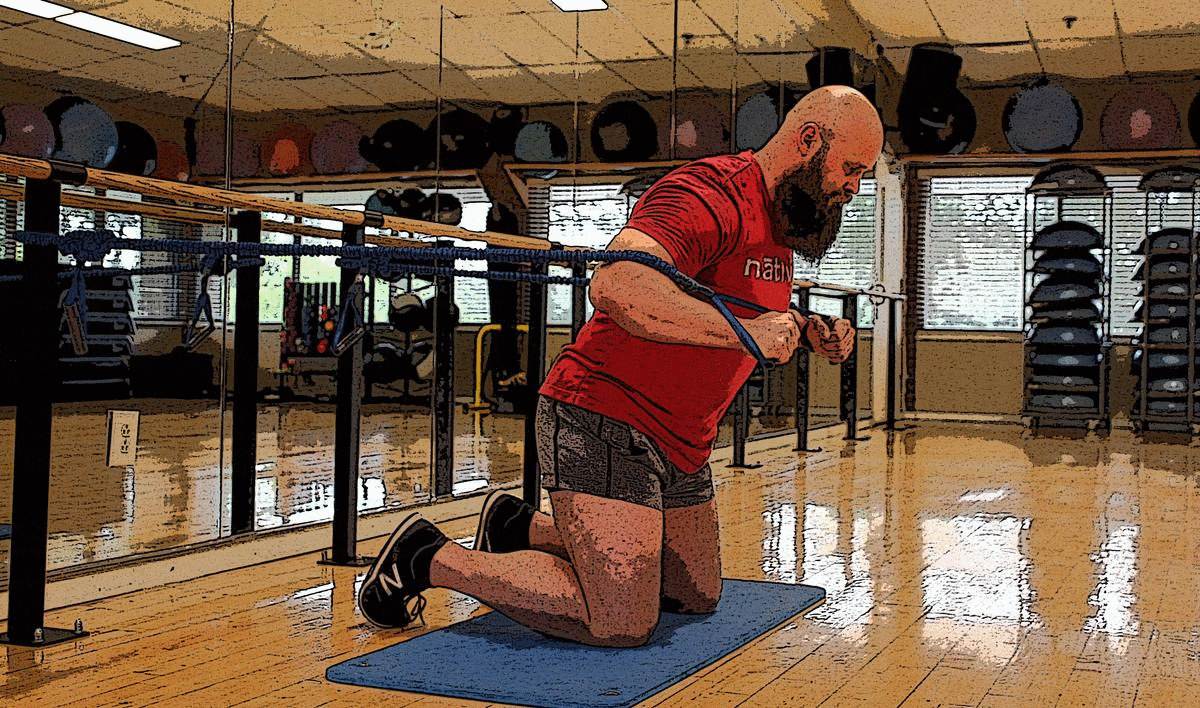
Personal trainer Justin Earnest does the Ground Pound Press. (Arkansas Democrat-Gazette/CELIA STOREY)
An active life is not without risk. Those who choose to engage in regular exercise or participate in recreational sports will get injured at some point. It's a statistical certainty.
So I want to discuss injury management techniques for the active adult.
We've all heard the stories of the 100-year-olds who never exercised, smoked their entire lives and died of old age without a single health concern. There's certainly a segment of the population that hangs its hat on such legends, because they provide a justification for less than careful lifestyle choices: "Why spend my time exercising or eating 'healthy' if I can live just as long doing whatever I want?"
I think most people know the correct answer to the question, and this certainly isn't an audience that needs to hear my sermon. But in case any of us start to take that question at face value, understand that longevity is not all that matters: quality of life is a different concern.
Some people are rightfully worried about injuring themselves while exercising and thus choose to do very little or nothing at all. Those with serious injuries in their health history can be susceptible to this type of trepidation, and I understand why.
I see three keys to overcoming this fear. First, know your limits. No personal trainer or coach knows your body better than you, so push yourself as far as you feel comfortable with. This goes for cardiovascular training, strength training, stretching and any other physical activity.
The second key to overcoming the fear of injury is to acquire some basic rehabilitation knowledge. Most soft-tissue injuries that occur in the course of regular exercise can be healed by applying the RICE method of "Rest, Ice, Compression and Elevation." It's a formula used for decades, and it works for all sorts of common injuries.
The final key is to treat yourself as an athlete.
Athletes manage their activity level according to how they're feeling and their current health conditions. What the body can handle changes from day to day. The idea is to think intentionally about your health status each day and assess what you can handle. This practice respects your very real limits — we all have them — and it goes a long way toward trusting yourself to exercise without fear of injury.
This week's exercise is a great way to challenge the upper body during times when you're not feeling 100%. The Ground Pound Press features the stretch band as the only required piece of equipment.
1. Attach two stretch bands to a squat rack about 3 feet off the floor — one on each side of the rack. Position yourself in the tall kneeling position in the center of the squat rack, facing outward. Grab the ends of the bands with an overhand grip.
2. Hinge forward at the hips to lean your torso slightly forward.
3. Press one arm down to the ground, then hold it in position without leaning forward or rotating.
4. Press the other arm down in the same manner. Squeeze your chest to hold the position for a beat.
5. Control the resistance of the band to retract your arms back to the start.
6. Alternate which arm presses first for each rep. Do two sets of 12.
Using stretch bands can be a fantastic strategy for overcoming a fear of injury because they are so much safer than a dumbbell or barbell. They can't fall on you; they are easier to control; and the resistance levels are much more manageable. For those looking to dip a toe into strength training after a long layoff, the stretch band can be a useful tool. Enjoy!
Matt Parrott has a doctorate in education (sport studies) and a master's in kinesiology and is certified by the American College of Sports Medicine.
Style on 05/20/2019
